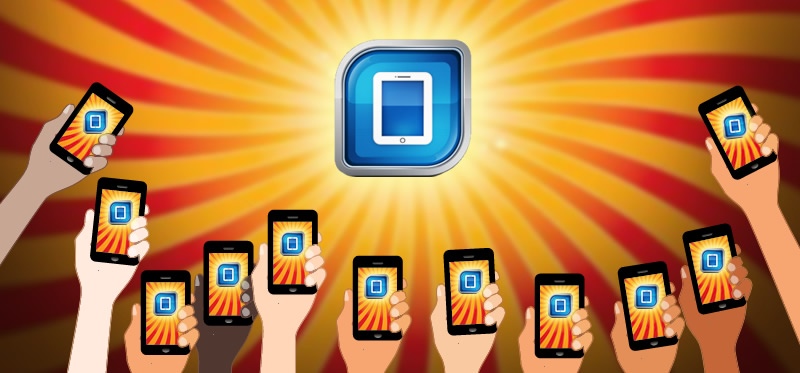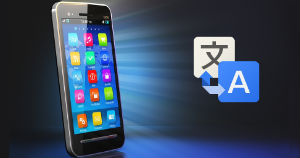With the undisputable whirlwind of smart-device adoption sweeping the globe, it is perhaps unsurprising that increasing app downloads (and revenues) are the knock-on effect. According to recent estimates by Gartner, global app downloads will increase by 37% in 2014 to 139 billion; climbing to nearly 269 billion by 2017. If you already have an app or are in the process of developing one, here is how to maximise downloads worldwide.
Choose the right app stores
In a perfect world, time and budget would not prevent you developing apps for all significant platforms and devices in a given market. In reality however, time and budget usually limit development forays to covering perhaps 1 or 2 app stores. In the majority of countries, this could well be Apple or Google. However, you should conduct research for each market – for example, in China there are over 100 Android app stores but Google Play is widely blocked and the Apple App Store is outside the top 10 in terms of market share.
If your niche has become too competitive, it may be best to try alternative app stores, particularly on Android-based devices, such as Samsung Apps, LG Smart World, and Amazon Apps.
Translate your app
If you are considering expanding internationally, you should conduct research to discover if there is an existing demand in a particular market.
Research has found that developers who launched localised versions of their apps showed a 128% increase in downloads and 28% increase in revenue. This kind of ROI makes translation a no-brainer, depending on the volume of content in your app.
Research the competition
Do not roll out to other countries without first assessing the features and benefits offered by rivals. But do not just seek to replicate them – make your app better at engaging users, with exclusive content, offers and functionality.
Research the typical monetisation strategies used. If competitors are giving away free content, do not launch a paid app. If paid apps are the norm within your niche, ensure your price is in line. If your app has to be priced higher, explain this in your app store page, for example: “this one-off fee enables you to access all our content, with no further subscriptions or in-app purchases”. You can even make your app free, but charge for premium content. If you launch a free app, you can recoup your development costs by integrating advertising banners – but make sure this is not at the expense of user experience.
Optimise your app store page
App stores are THE entry point for installing apps and, once live, it is a battle with other publishers for your app to be discovered. Keyword search drives the bulk of app discovery, so it is crucial to ensure your app is visible for as many relevant search queries as possible in a process known as App Store Optimisation. If you want your app to be found by local users, the first step is to conduct thorough keyword research in the target language using country-appropriate tools; for example, if you are targeting South Korea, you should use the search engine Naver to conduct keyword research, as it has the highest market share.
If there are competitors in your niche already, it makes sense to understand what keywords they are targeting and decide whether to follow or differentiate, depending on the strengths of you own app.
If your app is already live and receiving downloads, you should find out where your app is ranking against specific keywords using ranking tools. Ranking tools can inform you of the level of competition for each keyword so you can assess if you have a realistic chance of achieving a high ranking. By conducting ranking research, you can preserve existing rankings and find “gaps” or opportunities where your app currently has poor or no rankings at all.
Once you have determined a shortlist of 15 – 20 priority target keywords, these should be incorporated into the “meta content” of your app store page but it is important to know which are the important aspects, as these can differ between app stores. On Google Play, the app name/title and the description are considered highly by the search algorithm. For Apple App Store the app name is important, but the description is not considered at all. Instead, Apple provides developers with a “meta keyword tag”, which has a maximum of 100 characters and is not visible to App Store users. Check editorial guidelines for each app store to prevent rejection and rework.
Maximise the visual impact of your app store page
Your store page is your shop window; it needs to grab people’s attention and entice them to download your app, so it is important that your app store description lists the key features and benefits of your app. Both Google and Apple allow a maximum of 4,000 characters, so you should try to utilise as much as possible without sounding dull and repetitive.
You app icon is one of the first thing users will see, so you need to make the right impression and build trust, INSTANTLY. You should choose an icon that grabs attention and clearly conveys what your app is about. Try to avoid text, especially if your icon has to serve multiple countries. If you have to use text, avoid small fonts, as these can become illegible on smaller devices.
The Good: Map My Ride
This icon clearly conveys what the app is used for in combination with the app name and would work in many countries.
The Bad: KitKat Launcher Theme
Less means more! It might be a good app, but hard to tell what it does and can you see the text?
The Ugly: Grocery Tracker Shopping List
Icon design is not a place to cut corners; consult a professional.
Screenshots feature prominently on your store page; think of them as promotional assets which can further sell your app. Get creative and use the maximum number available (which differs between app stores) – do not just take a screenshot of your app home screen and expect users to understand what your app is about and get excited enough to download. Always ensure your graphics are culturally sensitive and in-tune with your target audience; make an impact, without causing offence and ensure all descriptive text is translated for each target country.
Google Play now allows you to link to your YouTube page, so create a short, catchy promotional video to show what your app does and the potential benefits to users. A well-produced video can be incorporated into your marketing materials and campaigns to raise awareness outside the app store. As of last week, Apple have introduced embedded videos for featured apps – but this feature is not currently available to all developers.
Keep track of your rankings and downloads before and after, so you can measure the impact of changes you make. Unfortunately, there is no silver bullet; test, learn, and improve.
Promote you app!
Developing your app is the EASY part, the real challenge lies in boosting discovery; app store optimisation may only take you so far, so do not sit back and expect people to come en masse. Fortunately, there are tactics at your disposal for driving visitors (and hopefully downloads) to your app store page:
Create an app marketing plan – popular mobile activities can differ from country to country, so conduct research to find out what is most likely to work. For example, a survey by GlobalWebIndex found that 60.45% of respondents in China had participated in micro-blogging via mobile devices (Q1 2013), compared to 6.06% of respondents in Japan.
Always try to target relevant users that are likely to convert towards your KPIs – app stores do not like apps with high uninstall rates and can penalise you through their ranking algorithms.
Keep it white hat; do not be tempted to buy fake reviews or bulk downloads as these yield poor user retention rates, can lower your ranking and are unlikely to generate ROI.
Create localised landing pages on your website and drive visitors to your international app store pages. If you cannot do this, create a localised microsite or blog to demonstrate the key features of your app and generate valuable content to support its main benefits. Optimise these web assets to drive SEO traffic towards your app store page.
Create a paid search campaign, using the most popular search engines in your target country. If the platform does not support linking to your app store page, use your localised website landing page, microsite or blog. If you have a substantial branding budget, you should test in-app/mobile advertising networks, such as Admob, Inmobi or Adfonic, which have global inventory and can send users directly to your app store pages.
Social media is huge – use it to raise awareness of your app among existing followers or advertise to relevant interest groups and engage new users; Facebook allows advertisers to link ads directly to app store pages.
If your app does something unique and valuable, this is a great source of PR material which can drive potential users to your website and store page. Identify key influencers in your field and persuade them to publish your guest blog post, or at least get them to mention you and link to your store page.
Smart banners can improve the mobile browsing experience by sending visitors on your website, directly to your app store page. They are easy to install by uploading code to your website which are provided by the relevant app platforms.
Use QR codes to drive mobile visitors directly to your store page. A survey conducted by GlobalWebIndex found that 56% of respondents in China had scanned a QR monthly (Q2, 2013), so do not discount tactics that will not necessarily work in your domestic market.
Above all, develop a great app!
Easier said than done; but an app stands a good chance of selling itself if it is designed with users in mind and provides valuable content, exclusive pricing/vouchers and features that are unique to the market – Forrester found that 50% of iOS users downloaded apps based on word of mouth recommendations from their friends and family. Integrating social media into your app will encourage users to share great features and content with their networks.
Deploy a regular update schedule to roll out new features and fix bugs. Monitor the performance of the app and user generated feedback and reviews posted on your app store page. Google allows developers to respond to reviews, so show appreciation for useful feedback and try to turn the situation around with good customer service.









how can i increase our app download count with the help of paid marketing apart from google ads, admob, and display networks. If there is another option to get our application viral please help me